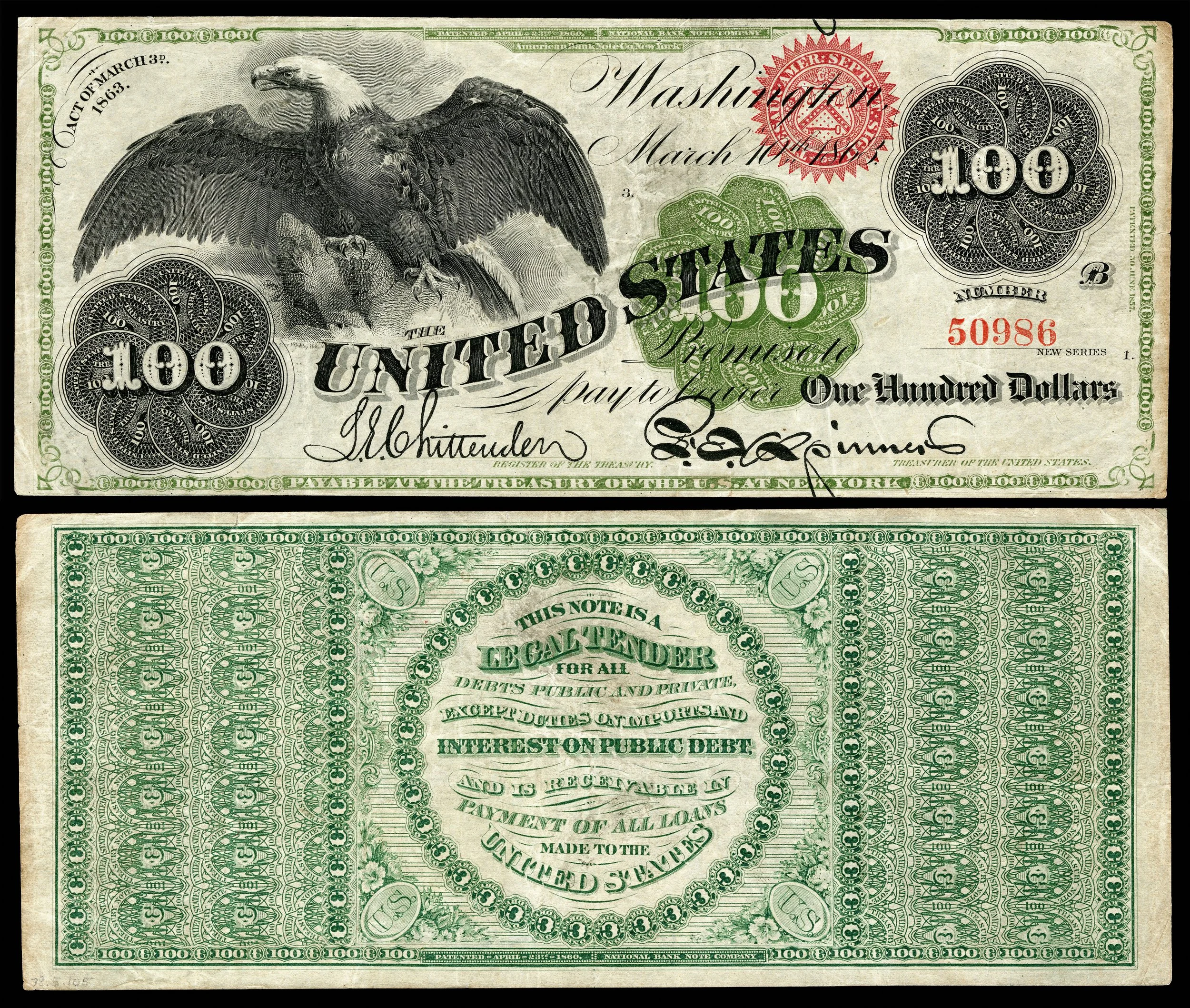The $100 Legal Tender & Monetary Technology
One advantage to physical money over cryptocurrency is that we have an object to study. If we look at the first $100 bills issued by the US Government, it can tell us a lot about mid-nineteenth century monetary technology.
Starting with the face. Notice that this obligation has no name. Later, these would be called United States Notes. But, these are unbacked, fiat notes. Contemporaries called them “Legal Tenders” or Greenbacks.
The note says it is a joint product of the American and National Bank Note Companies. These were the two largest banknote printers in the US that formed a duopoly during the Civil War, allowing them to overcharge the government for printing.
The act of March 3, 1863 authorized a second issue of $100s and printing on this “new series” started on March 10, 1863. The notes were to be issued from the Treasury in Washington, DC.
The face mentions an 1860 patent. This refers to the patent green ink used as a security feature. This made the Greenback green.
The “B” on the far right indicates the note’s position on the printing plate. (Second from the top of a four-subject sheet.)
The note bears the signatures of the Register and Treasurer of the US. This points out that the Treasury was using the bureaucracy normally used to issue bonds and notes to issue currency.
The notes were "payable" at the New York sub-Treasury, meaning they could be exchanged for other notes (but not for gold). As I presume redeemed notes were directed to New York because it had the facilities to handle the processing of old notes.
The back shows that these were legal tender notes that could be used for all purposes except paying import duties and interest on the public debt. These were payable in gold only.

